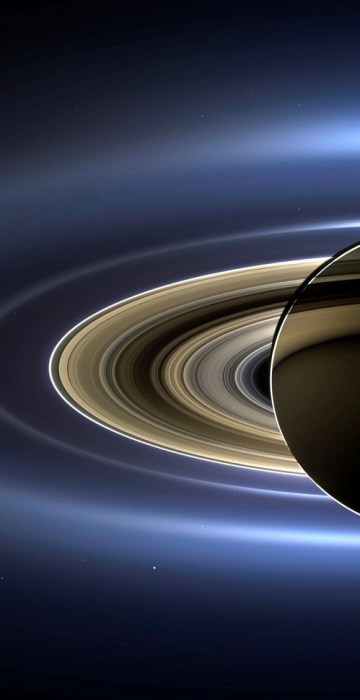
Space
Farewell From Saturn: Cassini's Dazzling Photos of Ringed Planet
Cassini disintegrated in the skies above Saturn early on Friday, following a remarkable journey of 20 years.

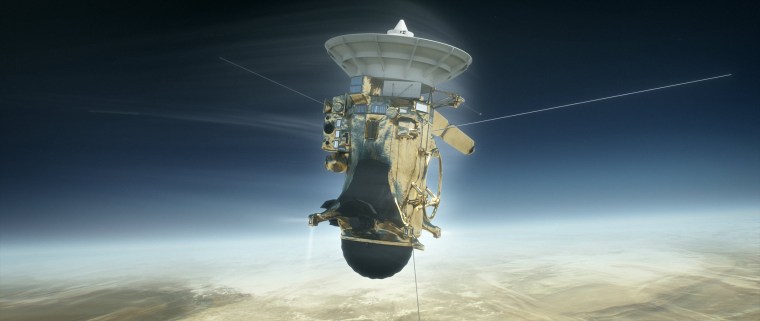
The Journey Ends
"In the skies of Saturn, the journey ends, as Cassini becomes part of the planet itself."
The quote above, from NASA's JPL website, describes how the spacecraft ended its mission, plunging into Saturn while fighting to keep its antenna pointed at Earth as it transmittted its farewell.
For over a decade, Cassini has been sending us captivating images of Saturn, its mysterious rings, and its family of icy moons.
Above: An artist's conception depicts Cassini as it begins to burn in Saturn's atmosphere.
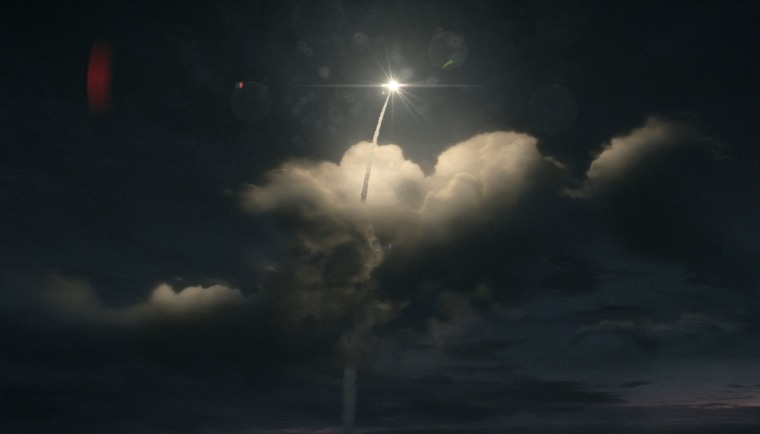
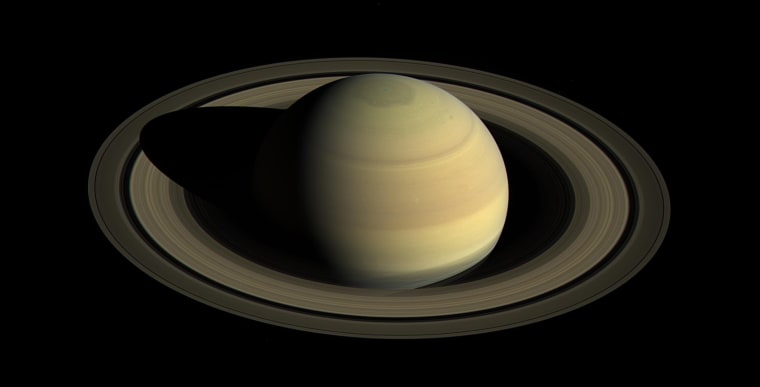
Summer is Coming
Since NASA's Cassini spacecraft arrived at Saturn in mid-2004, the planet's appearance has changed greatly. Saturn's year is nearly 30 Earth-years long and the shifting angle of sunlight as the seasons march forward has illuminated the giant hexagon-shaped jet stream around the north polar region. The subtle bluish hues seen earlier in the mission have continued to fade.
This view shows Saturn's northern hemisphere in 2016.
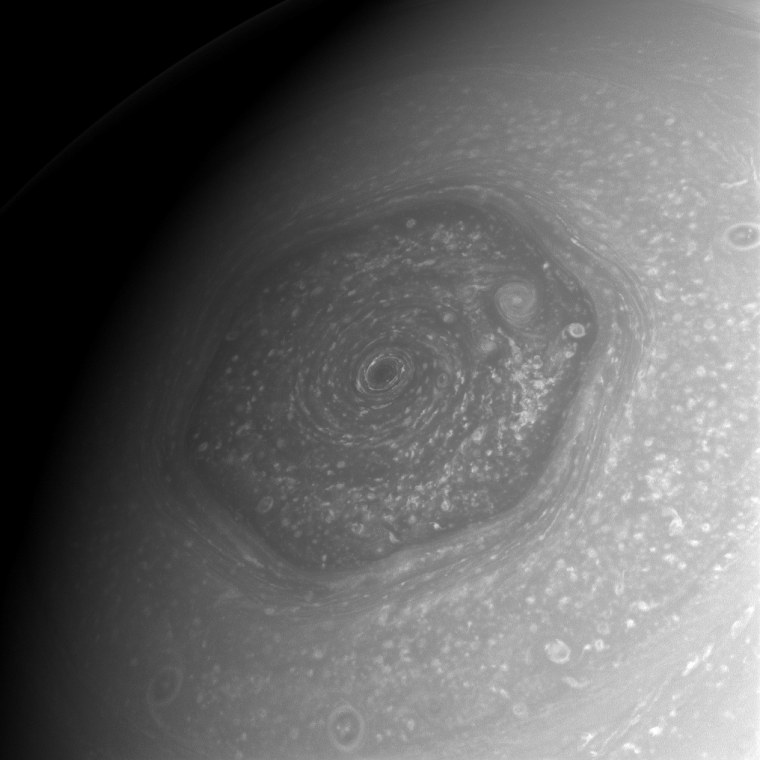
Stormy Weather
Spanning a distance of 20,000 miles across the planet's north pole, Saturn's distinctive polar hexagon, seen here in 2013, is a wavy jet stream with a massive hurricane at the center. Winds whip around the eye of the storm at up to 330 mph.
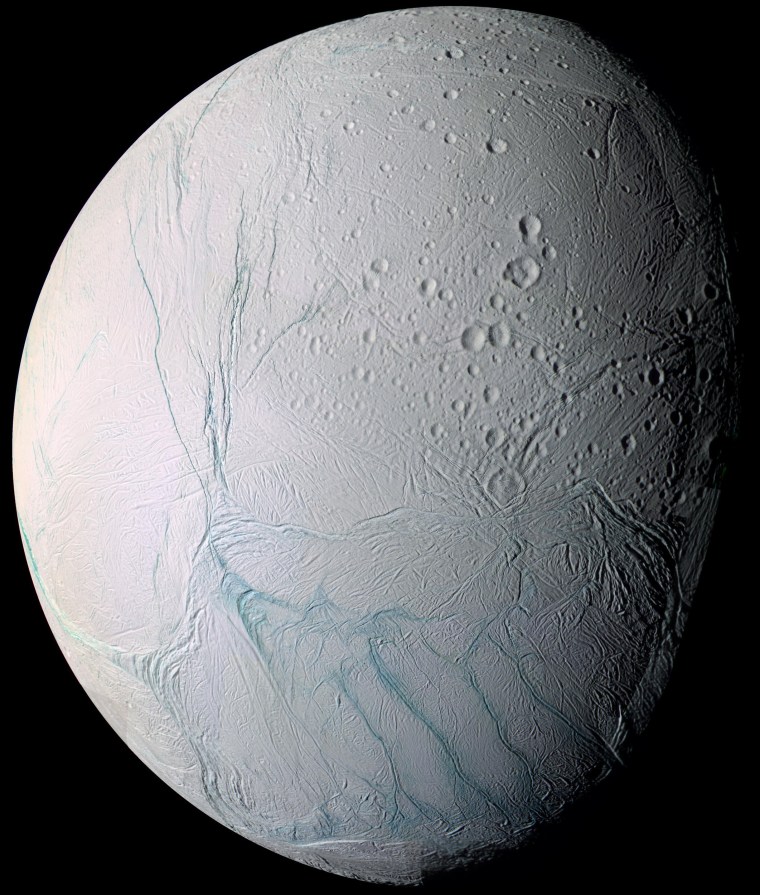
Signs of Life?
Saturn's sixth largest moon, Enceladus, has loomed large in the minds of astrobiologists since 2005, when Cassini first spotted geysers of water ice erupting from "tiger stripe" fissures near its south pole.
Scientists think these geysers are blasting material from a sizable ocean buried beneath the satellite's ice shell, indicating that Enceladus has liquid water, one of the key ingredients required for life.
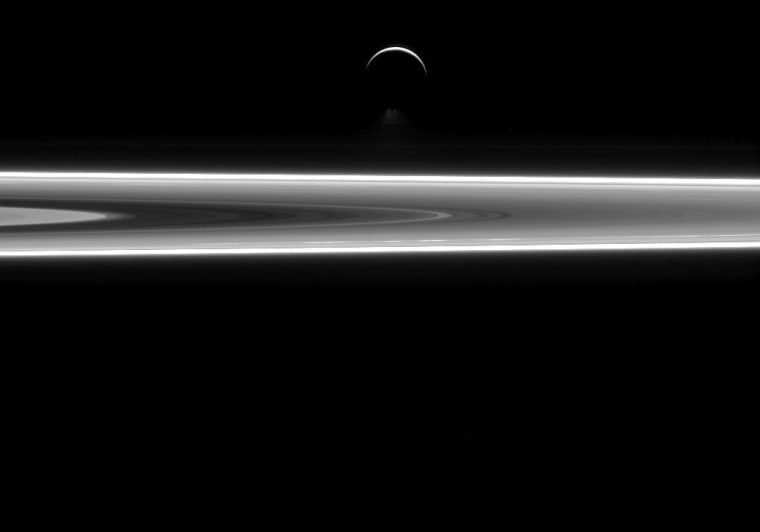
"Thar She Blows!"
Plumes of water vapor and ice are just visible as they erupt from the south pole of Enceladus in 2015.
Like Enceladus, Saturn's rings are largely made up of water ice. The small ring particles are too tiny to retain internal heat and have no way of warming, so they remain frozen and geologically dead. Enceladus, on the other hand, is subject to forces that heat its interior, which results in its south polar water jets.

Hello Earth!
This natural-color image from 2013 is the first in which Saturn, its moons and rings, and Earth, Venus, and Mars, all are visible.
The image captures 404,880 miles across Saturn and its inner ring system. Cassini's imaging team processed 141 wide-angle images to create the panorama.
Don't strain your eyes, the Earth is just a tiny speck below the rings to the right of Saturn. You'll have to look at this much higher-resolution version of the image to see it.
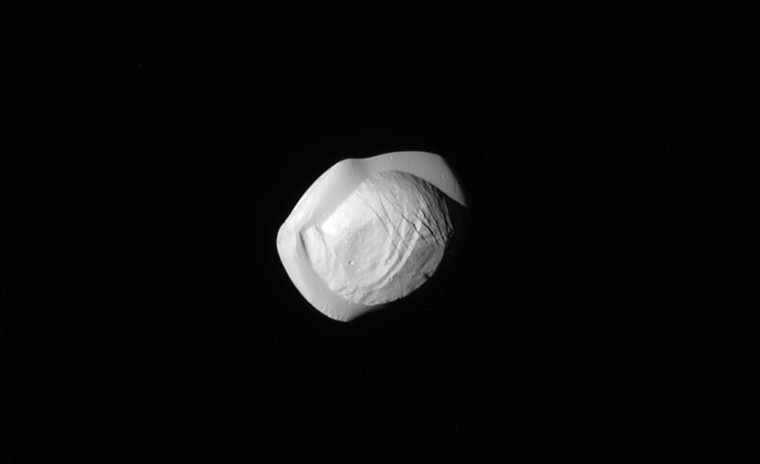
Space Ravioli
Images of Saturn's tiny moon Pan was captured during a flyby on March 7, 2017. The images are the closest ever taken of the moon, which has an average diameter of only 17 miles.
Pan's prominent equatorial ridge gives it a distinctive flying saucer shape. The ridge is believed to be the result of material from Saturn's rings raining down on the moon.
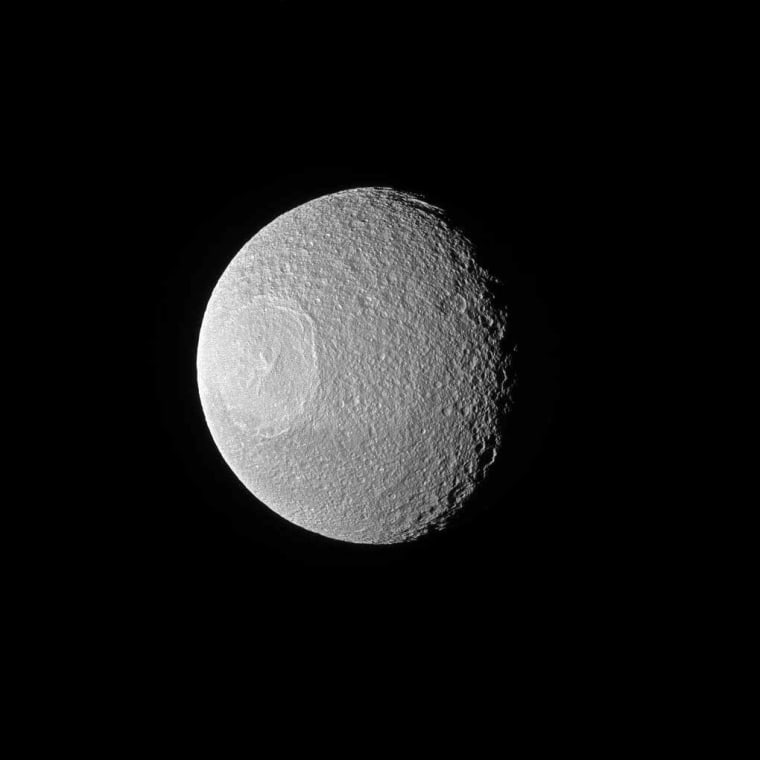
"Death Star"
"That's no moon," says Jedi knight Obi-Wan Kenobi in "Star Wars" when the Empire's deadly space station appears in the distance. Tethys, one of Saturn's larger icy moons, has earned the nickname "Death Star" moon because of its striking resemblance to the floating fortress. The similarities are due to the enormous crater, Odysseus, and its complex of central peaks.
Like any moon, Tethys (660 miles across) has suffered many impacts that have shaped its surface. In this case, a large impact not only created a crater known, but the rebound of the collision caused the mountainous peaks, named Scheria Montes, to form in the center of the crater.
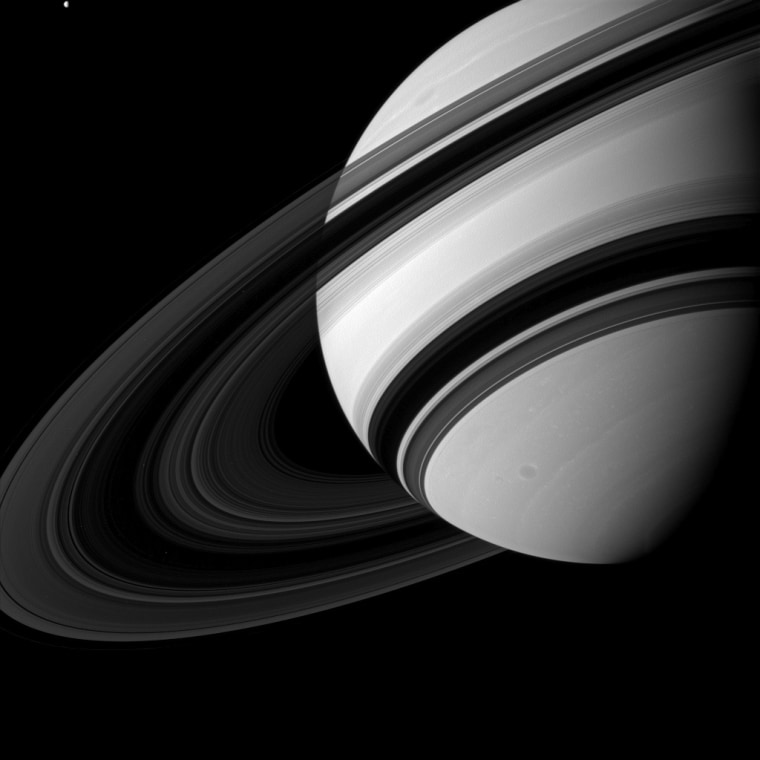
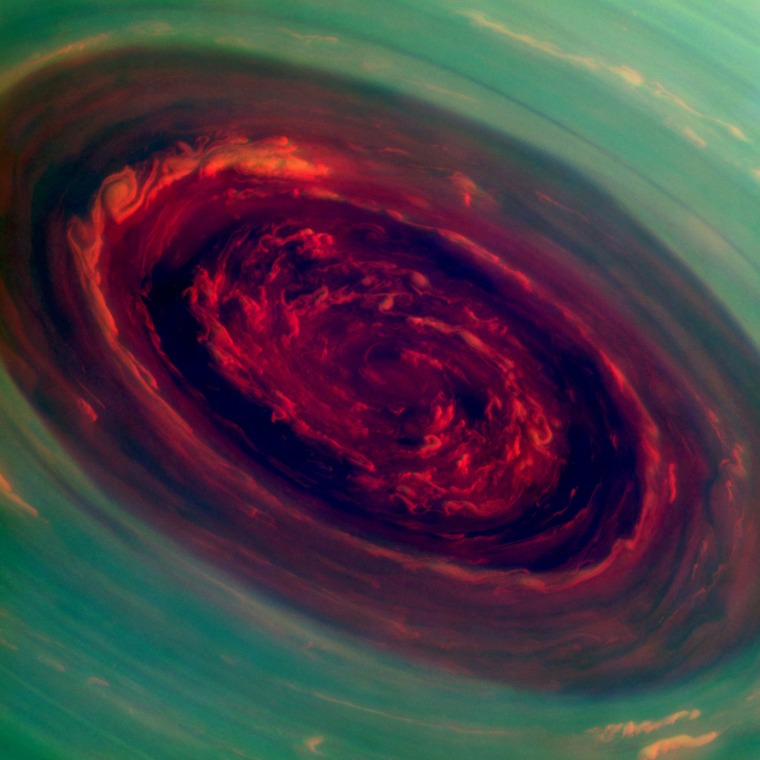
Monster Storm
An enormous storm churns in this false-color image of Saturn's north pole in 2013. The eye of the storm is 1,250 miles across or 20 times larger than the typical eye of a hurricane on Earth. Unlike Earth's hurricanes, this storm was not moving. It was stalled on the planet's north pole, where it had likely been whipping around for years.

Peekaboo Moon
Enceladus appears behind Saturn's moon Dione in 2015. Although the moons are composed of nearly the same materials, Enceladus has a considerably higher reflectivity than Dione and as a result, it appears brighter against the dark night sky.
Saturn has 53 confirmed moons and another 9 provisional moons.
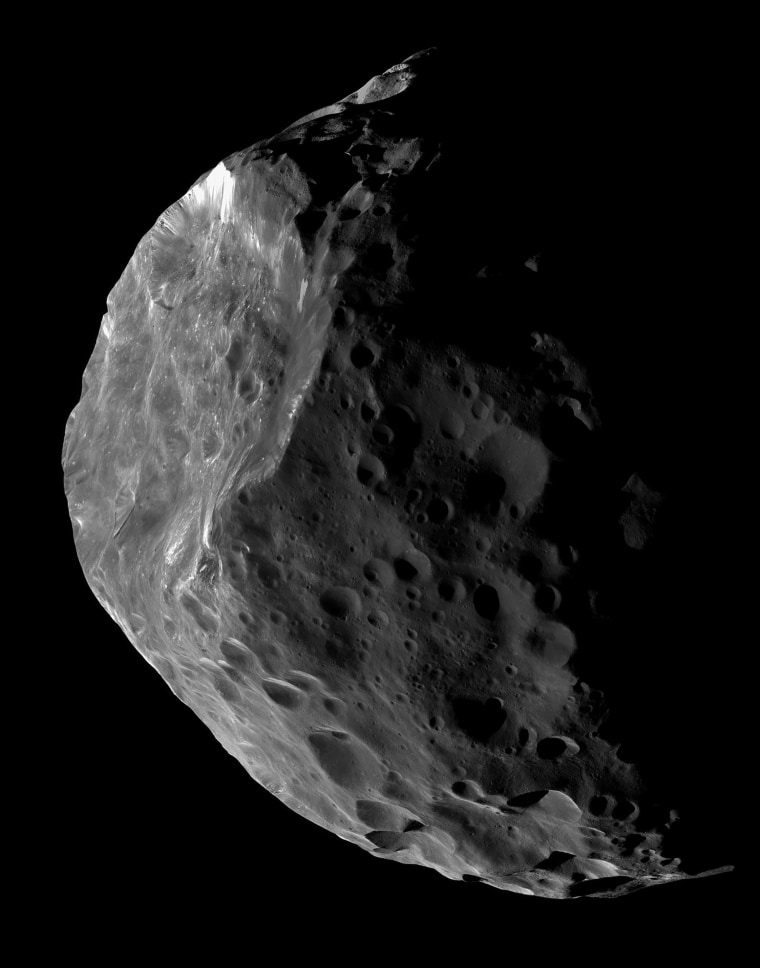
Captured Comet?
Scientists think it's possible that Saturn's moon Phoebe, seen here in 2015, was a comet before it was captured by the planet's gravity. Phoebe's irregular surface, retrograde orbit, an assortment of large and small craters, and low average density appear consistent with the hypothesis that it was part of the Kuiper Belt of icy comets beyond Neptune.
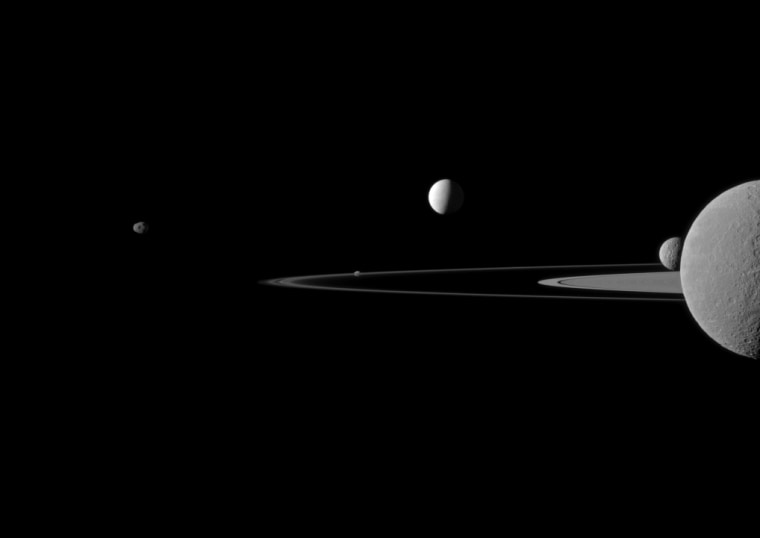

Catching its Tail
The huge storm churning through the atmosphere in Saturn's northern hemisphere encircles the planet in this true-color view captured on Feb. 25, 2011. It was taken about 12 weeks after the storm began, and the clouds by this time had formed a tail that wrapped around the planet.
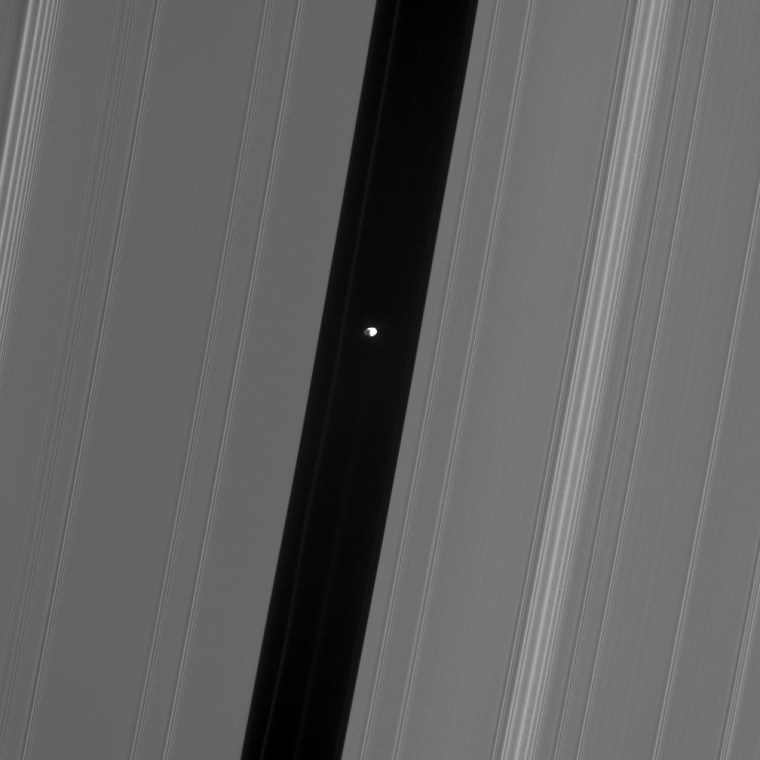
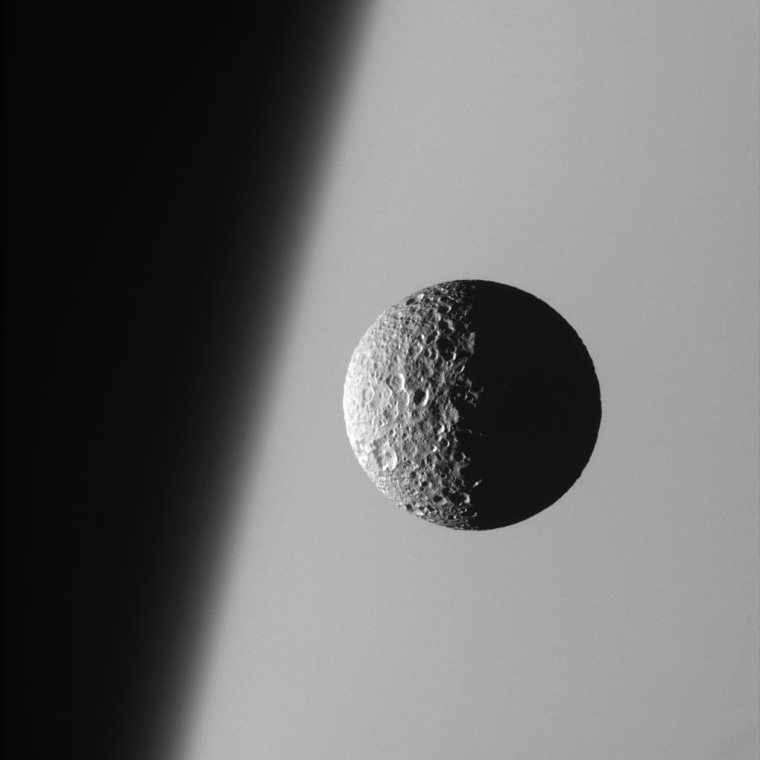
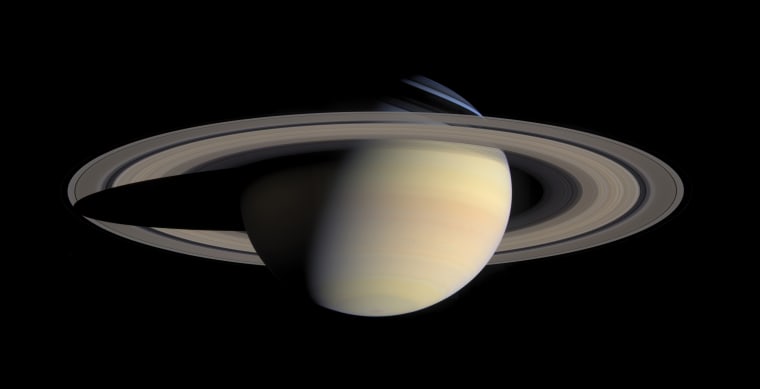
Saturn Mosaic
This image of Saturn, composed of 126 images covering one end of Saturn's rings to the other, was acquired in a tile-like fashion by Cassini over the course of two hours on Oct. 6, 2004, while the orbiter was approximately 3.9 million miles from the planet.
Related: Scientists Bereft Over End of Cassini's Extraordinary Mission

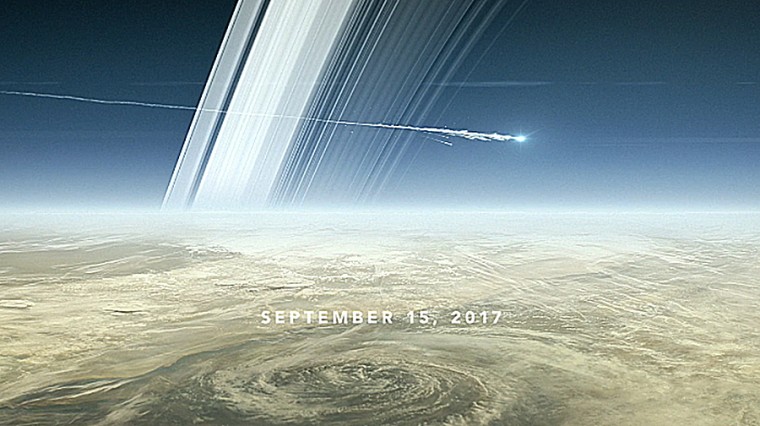
Grand Finale
Cassini plunges into Saturn in this artist's conception illustrating its planned demise on Sept. 15, 2017.
PHOTOS: 40 Years Later, Voyager Spacecraft Continue Their Grand Tour